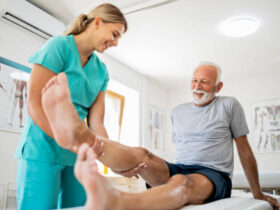Introduction
Where Art Meets Technology
The realm of art is constantly evolving, embracing new mediums and technologies. 3D printing has emerged as a powerful tool that intersects art and technology, offering artists and designers new avenues for creative expression. In this article, we explore the artistic potential of 3D printed toys and how they push the boundaries of traditional artistic practices.
Sculptural Exploration
Beyond Traditional Materials
3D printed toys allow artists to transcend the limitations of traditional materials and explore new possibilities in sculpture. They can create intricate and complex forms that were previously challenging to achieve manually. The freedom to experiment with shape, texture, and structure enables artists to bring their imaginative visions to life in ways that were once unimaginable.
Digital Sculpting and Modeling
The digital nature of 3D printing allows artists to embrace digital sculpting and modeling techniques. With specialized software, artists can sculpt and manipulate virtual objects, refining their designs with precision. This digital workflow provides a dynamic and intuitive approach to sculpture, allowing for iterative design and exploration of different variations.
Fusion of Art and Functionality
Interactive and Playful Art
3D printed toys blur the line between art and functionality, creating interactive and playful art pieces. Artists can incorporate movement, kinetic elements, and interactive features into their toy designs, engaging viewers in a multisensory experience. These interactive artworks challenge traditional notions of static art, encouraging active engagement and participation from the audience.
Art as Play and Education
Through 3D printed toys, art can become a tool for play and education. Artists can design toys that not only evoke aesthetic pleasure but also convey educational or social messages. By combining artistic expression with educational content, artists can create toys that inspire curiosity, foster learning, and ignite the imagination of both children and adults.
Collaboration and Innovation
Open-Source Collaboration
The 3D printing community thrives on collaboration and open-source innovation. Artists can share their 3D models, techniques, and ideas with others, fostering a culture of collaboration and exchange. This collective approach to artistic creation fuels innovation and encourages artists to push the boundaries of what is possible, inspiring one another to explore new artistic territories.
Hybrid Art Forms
3D printed toys enable the creation of hybrid art forms that merge various artistic disciplines. Artists can combine elements of sculpture, design, digital art, and even traditional crafts to create unique and interdisciplinary artworks. This fusion of different art forms opens up exciting possibilities for artistic experimentation and the creation of truly groundbreaking pieces.
Conclusion
The artistic potential of 3D printing toys expands the horizons of art and design. Through sculptural exploration, a fusion of art and functionality, collaboration, and hybrid art forms, artists can push the boundaries of traditional artistic practices and create innovative, interactive, and thought-provoking artworks. As artists continue to embrace 3D printing technology, we can anticipate a new era of artistic expression that blends creativity, technology, and playfulness in ways that captivate and inspire audiences around the world.







